-
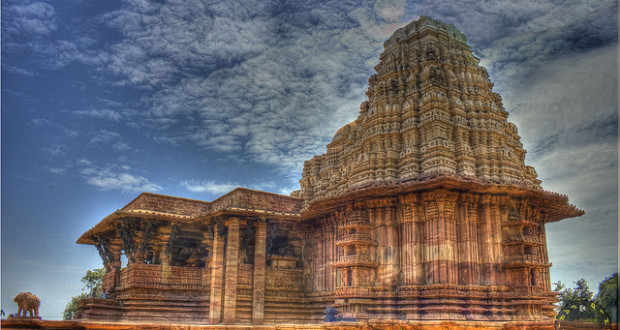 Ramalingeswara Temple, Warangal
Ramalingeswara Temple, Warangal
The Ramappa Temple, also known as Ramalingeswara temple is located in the Palampet village at a distance of about 77 km from Warangal. The temple is another example of Kakatiya Dynasty. This is one of the temples which was named after its chief architect. The temple is dedicated to Lord Shiva and the architecture of this temple is similar to the famous Ghanpur Group of Temples of Warangal itself. The temple is a master piece of Kakatiyan architecture and everyone must visit to get a glimpse in the life of Kakatiya people.
-
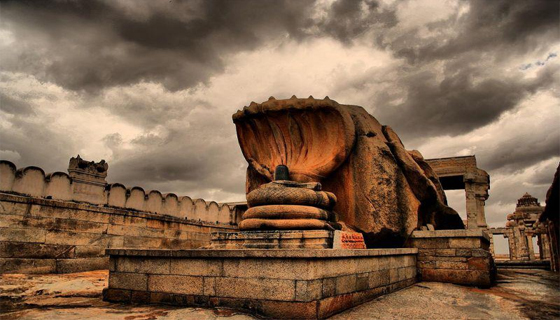 Lepakshi Temple, Lepakshi
Lepakshi Temple, Lepakshi
Lepakshi is a village in the Anantapur District of Andhra Pradesh, India. It is located 15 km (9.3 mi) east of Hindupur and approximately 120 km (75 mi) north of Bangalore. Lepakshi is culturally and archaeologically significant as it is the location of shrines dedicated to Shiva, Vishnu and Veerabhadra which were built during the Vijayanagara Kings' period (1336-1646).
-
 Sri Mallikharjuna Swamy Temple, Komaravelli
Sri Mallikharjuna Swamy Temple, Komaravelli
The Lord is believed to have manifested as Sri Mallikharjuna Swamy and made Komaravelli his abode in the eleventh century CE. The Lord married Golla Ketamma from the Yadava community and Medalamma from the Linga Balija community, which explains the association of those communities with the worship services of the Lord.
-
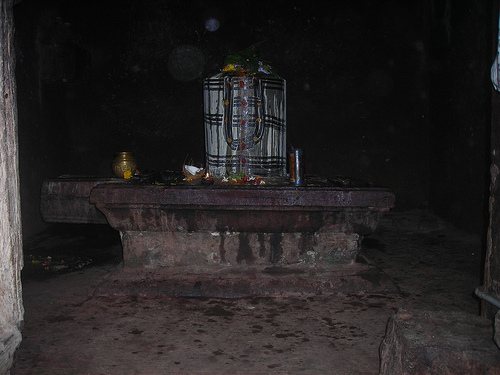 Srimukhalingeswara Temple, Sri Mukhalingam
Srimukhalingeswara Temple, Sri Mukhalingam
Srimukhalingeswara temple, dedicated to Lord Shiva, is a major pilgrimage center in the state. It is located in a village known by the same name, 45-odd kilometers to the north of Srikakulam, on the banks of the holy Vamsadhara River. The temple is known for artistic splendor and stands out as one of the finest examples of Kalinga architecture. Ornate sculptures adorn the Gopurams and walls of this shrine.
-
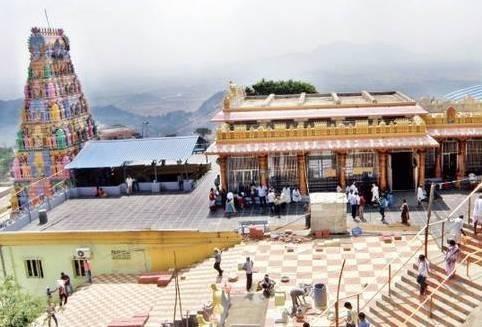 Trikooteswara Temple, Narsaraopet
Trikooteswara Temple, Narsaraopet
The temple can be dated to the period of the Chalukyas and is said to be built by an ardent devotee named Elchuri Veeresalingam. Over the course of time, the temple fell under the patronage of the Velama Zamindars of Narsaraopet. who used to worship the Lord with great devotion. They made significant contributions to the temple and the tradition continued until the Zamindari system was abolished after India gained independence.
-
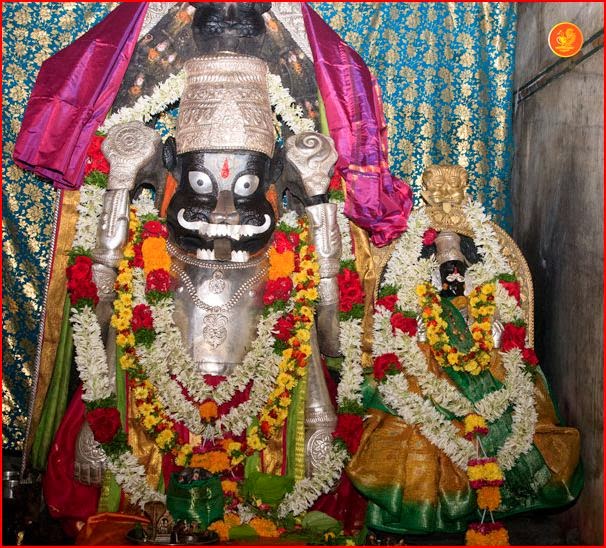 Sri Lakshmi Narasimha Swamy Devasthanam, Dharmapuri
Sri Lakshmi Narasimha Swamy Devasthanam, Dharmapuri
Sri Lakshmi Narsimha Swamy's kshetram in Dharmapuri is one among the nava Narsimha Kshetrams in Andhra Pradesh. Prior, this place was directed by the ruler Dharma Varma henceforth the place is known as Dharmapuri. According to the chronicled foundation of the place, however this refuge existed decidedly before 850-928 BC, it was beat by the Bahumani Sultans in the year 1422-1436 and again in the seventeenth century, the asylum was patched up. In this refuge, swamywaru is cut in Shaligram shila
-
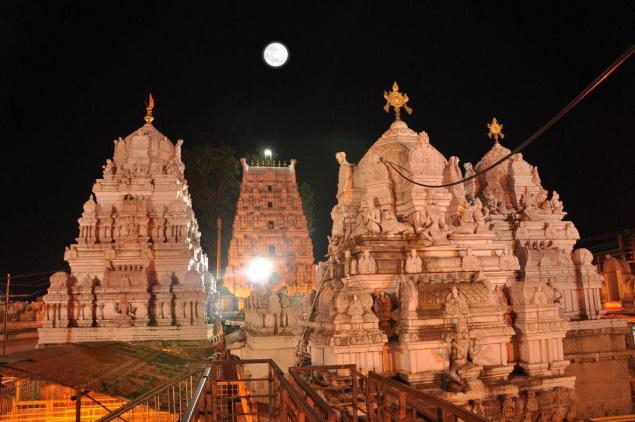 Sri Raja Rajeshwara Temple, Vemulavada
Sri Raja Rajeshwara Temple, Vemulavada
Sri Raja Rajeshwara Swamy Devasthanam ? Abode of Lord Eashwara ? at Vemulawada village of Karimangar District in Andhra Pradesh State is one of the ancient and famous Shivate temples
-
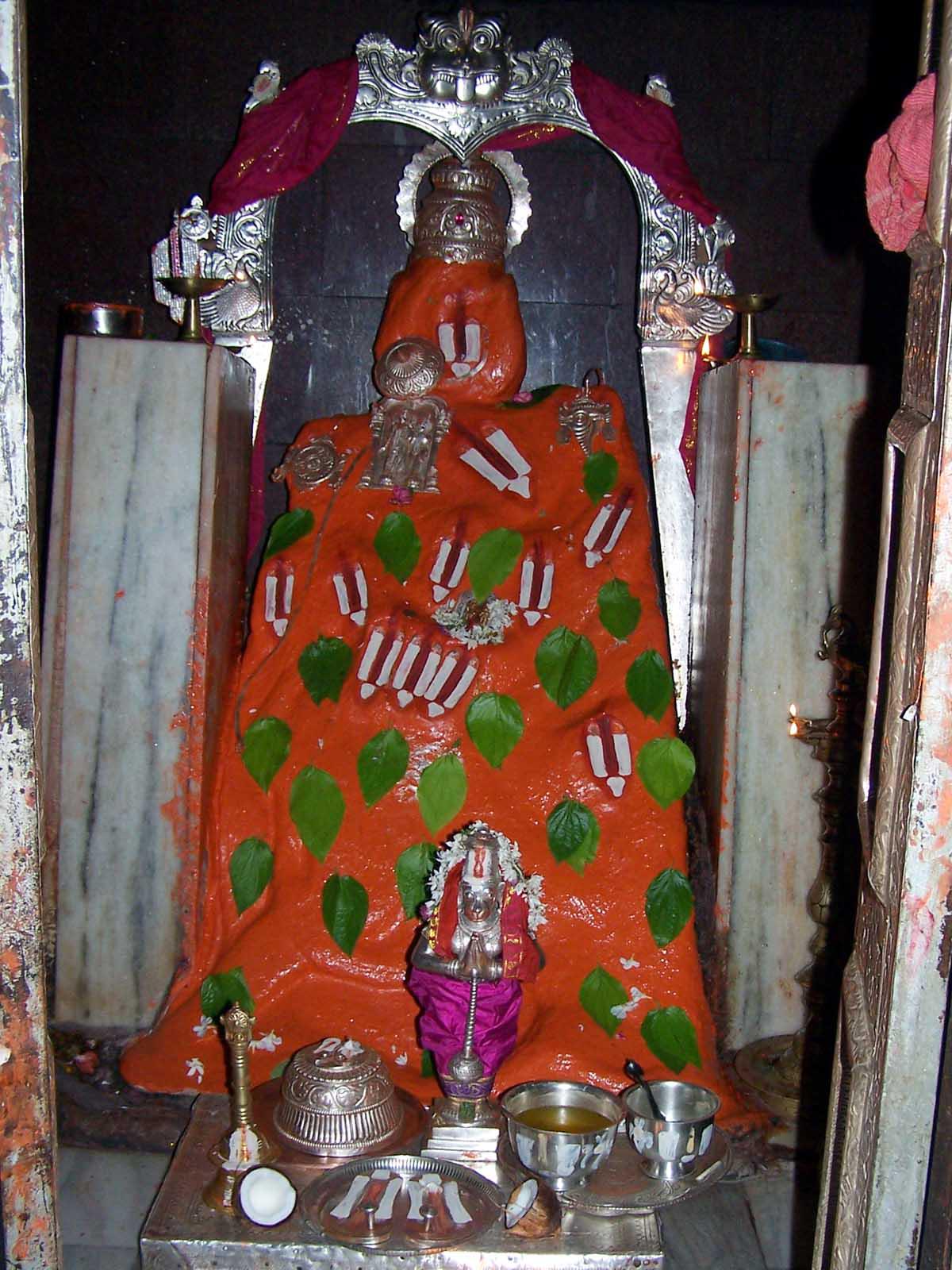 Sri Bhaktha Anjaneya Swamy Temple, Kondagattu
Sri Bhaktha Anjaneya Swamy Temple, Kondagattu
Sri Anjaneya Swamy vari Devasthanam his situated on hill calld Kondagattu Amidst of hills and forest aria at a distance 40 K.M. from Karimnagar and 16 K.M from Jagityal.The presiding deity, Sri anjaneya Swamy varu is said to be Swayambhoo as seen from the silasasana which is available on the external wall ao the main temple.It shows that parents of singam Balaiah i.e Singam Sanjeevudu and Ashamma from Kodimyal Village had Constructed a temple.
-
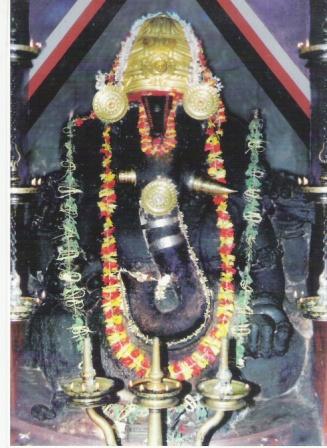 Shree Madanantheshwara Siddhivinayaka Temple, Kasaragod
Shree Madanantheshwara Siddhivinayaka Temple, Kasaragod
Madhur Ganapathi Temple is also known as Madur Madanantheswara Siddhi Vinayaka temple. It is one of the famous temples in North Kerala which is 8 km?s away from Kasargod town. It is located in the bank of river Madhuvahini. In front of the temple, Madhuvahini River is flowing and all other sides are surrounded by the paddy fields and coconut trees. The locality of the temple has greenery picturesque which is very natural and makes enthusiasm about the place. The main presiding deity is Lord Shiva.
-
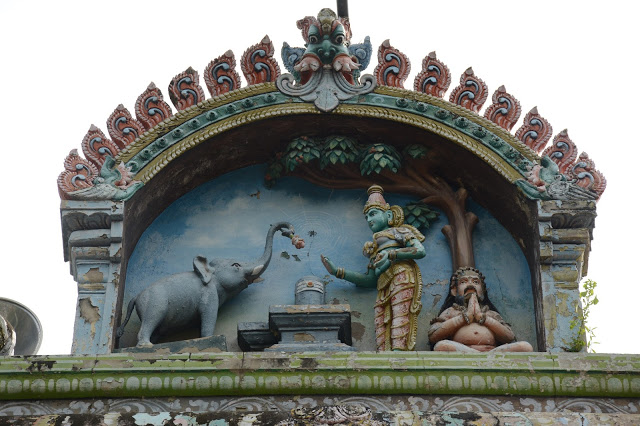 Arulmigu Jambukeswarar Akhilandeswari Temple, Thiruvanaikaval, Trichy, Tamilnadu
Arulmigu Jambukeswarar Akhilandeswari Temple, Thiruvanaikaval, Trichy, Tamilnadu
The temple is one of the Panchabhoota Sthalams (signifying the 5 natural elements) and the sanctum of Lord Jambukeshwara has an underground water stream. And one can see water (neer) coming out of that stream, Hence this temple is also reverred as 'Appu Sthalam' and the ShivaLingam here is called as 'Appu Linga'. The Presiding Deity is Devi Akilandeswari Amman. Akhilandeshwari means 'Ruler of the Universe' (Akilam Universe, Aanda Ruler, Eswari Goddess).
-
 Pancha Bhoota Stalas
Pancha Bhoota Stalas
Pancha Bhoota Stalam or Pancha Bhoota Stala refers to the five Shiva temples, dedicated to Shiva, the most powerful Hindu god among the thirimurthis and also the most mercyful among them, each representing the manifestation of the five prime elements of nature- land, water, air, sky, fire.
-
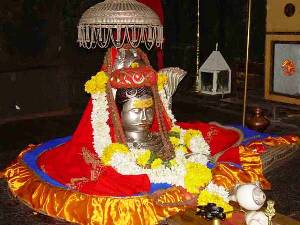 Shri Bhimashankar Temple, Bhorgiri, Pune, Maharashtra
Shri Bhimashankar Temple, Bhorgiri, Pune, Maharashtra
Bhimashankar is an ancient shrine situated in the Sahyadri hills in the state of Maharashtra. It is one of the well known Jyotirlinga, amongst the twelve jyotirlingas situated all over India. Bhimashankar is located in the village of Bhorgiri 50 km north west of Khed, near Pune. It is located 125 km away from Pune in the ghat region of the Sahyadri hills.
-
 Hindu Symbols
Hindu Symbols
Trishul,Bindi,Kalash,Yantra,The saffron-colored flag, Rudraksha Bead,Lotus,Shankha (Conch Shell),Dharmachakra,Lamp,Banyan Tree,Nandi,Shri,Ganesha,Kamandalu, Cow,Sudarshan As Hinduism is the oldest religion on the earth, it has more numbers of symbols than other religions. Each Hindu symbol has a different meaning and is used on different occasions. Hinduism symbols are also used as body tattoos in the Western countries as well as in India.
-
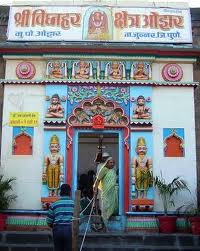 Shri Vighnahar Ganapati Temple,Ozar, Pune, Maharashtra
Shri Vighnahar Ganapati Temple,Ozar, Pune, Maharashtra
The temple is one of the Ashtavinayaka, the eight revered shrines of Ganeshain Maharashtra, India. The Ganesha form worshipped here is called Vigneshwara (spelt also as Vigneshvar(a), Vigneshwar : "Lord of obstacles") or Vignahar (spelt also as Vignahara, "Remover of obstacles") and is associated with the legend of Ganesha defeating Vignasura, the demon of obstacles
-
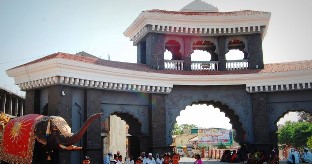 Shree Kshetra Ranjangaon Ganpati Devstan, Ranjangaon, Pune, Maharashtra
Shree Kshetra Ranjangaon Ganpati Devstan, Ranjangaon, Pune, Maharashtra
The Peshwas of Maratha kingdom have contributed to the temple notably, Srimant Madhavarao Peshwa, who is said to have constructed the sanctum around 1790 AD. There are evidences that point the antiquity of the temple to around the ninth and tenth centuries.
-
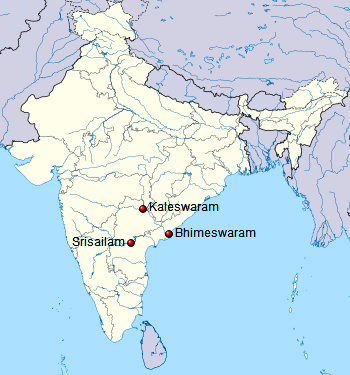 Trilinga Desam or Trilinga Kshetras or Trilinga Temples
Trilinga Desam or Trilinga Kshetras or Trilinga Temples
The Etymology of Telugu is thought to have been derived from trilinga as in Trilinga Desa, "the country of the three lingas" and as per the Mythology, The Lord Shiva has been descended as Shivalingam on three sacred mountains.
-
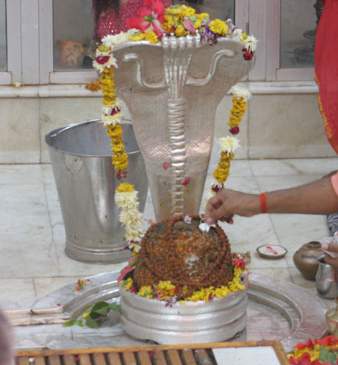 Nageshwar Jyotirlinga,Jamnagar, Gujarat
Nageshwar Jyotirlinga,Jamnagar, Gujarat
Nageshwar Jyotirlinga is an important temple of Lord Shiva near Dwarka. Here, Lord Krishna Himself used to worship and perform Rudrabhishekam. The Rudra Samhita sloka refers to Nageshwar with the phrase Daarukaavane Naagesham. This shloka is also the source about the controversy of the location of this temple.
-
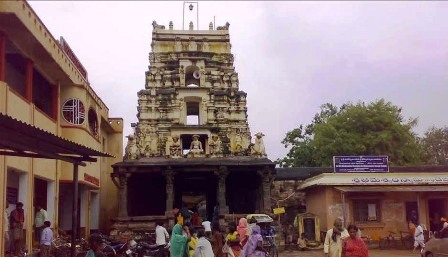 Bhimeswara Swamy Temple, Draksharamam,East Godavari, Andhra Pradesh
Bhimeswara Swamy Temple, Draksharamam,East Godavari, Andhra Pradesh
Draksharamam is an ancient temple and is known as Dakshina Kasi or Benares of the south. The temple is one of the five "Pancharama" Kstetras and also known as Trilinga Desa from its combination with Srisailam and Srikalahasti. This one of those rare shrines where equal importance is given to both the Lord and the Goddess.
-
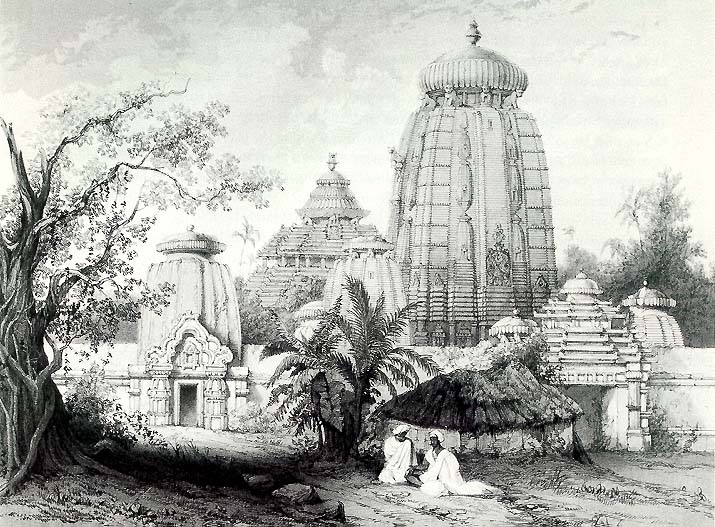 Lingaraja Temple
Lingaraja Temple
The Lingaraja Temple is one of the most famous temple in Orissa. It is one of the best and splendid architectural excellence which the artists had attained during 11th century. This temple is also known as the Bhubaneswar temple.
-
 The meaning and importance of Shivlinga
The meaning and importance of Shivlinga
Lord Shiva is worshipped in the form of linga from ancient times. Lord Shiva is one of the trinity of Brahma, Vishnu and Mahesh and even considered to be supreme lord. He has been worshipped by various devtas (gods) in Hindu mythology and by Vishnu Dashavatara's. But why in the form of Linga?
-
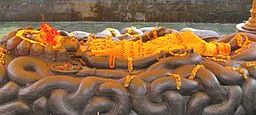 Pashupatinath Temple, Nepal
Pashupatinath Temple, Nepal
The Pashupatinath Temple is a famous, sacred Hindu temple dedicated to Pashupatinath is located on the banks of the Bagmati River 5 kilometres north-east of Kathmandu Valley in the eastern city of Kathmandu, the capital of Nepal.
-
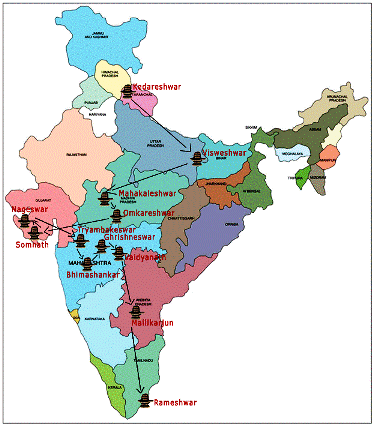 Jyotirlinga Shrines
Jyotirlinga Shrines
Worship of shivalinga is considered the prime worship for the devotees of Lord shiva. Worship of all other forms is considered secondary. The significance of the shivalinga is that It is the resplendent light (flame) form of the Supreme - solidified to make the worship of It easier. It represents the real nature of God - formless essentially and taking various forms as It wills.